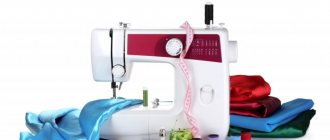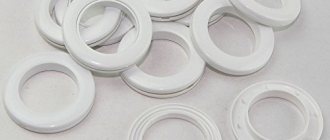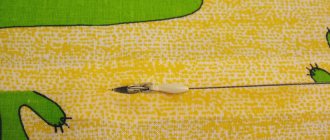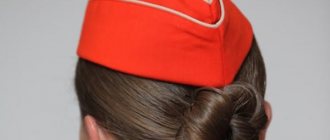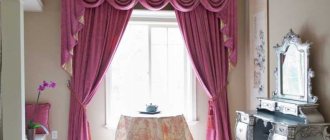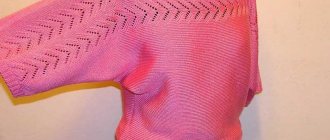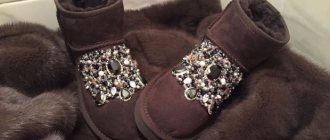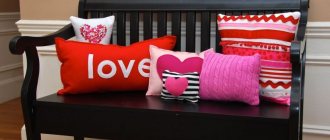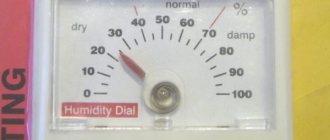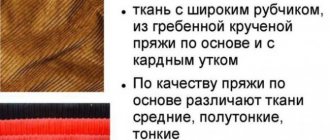In recent years, car enthusiasts have begun to enthusiastically approach the issue of transforming the car inside and out, while flocking the interior is in increasing demand.
This type of tuning is popular in the West and the USA, but the CIS countries are not far behind.
Why not? An element of a car that is covered with flock changes its appearance, becomes stylish and pleasant to the touch.
The technology itself is simple, which opens up ways for savings and the possibility of doing tuning yourself.
What is car interior flocking? What is its technology and essence?
Flocking in English sounds like “flocking”. The essence of such tuning is to apply a special material (flock) to the surface.
The main purpose of flocking a car is to change the appearance of the processed product, give it a modern look and protect it from negative influences.
Interior flocking is considered a new type of tuning. But it is not so. The technique was developed back in ancient times.
The pioneers were the ancient Chinese, who created a craft that resembles the technology popular today.
The Chinese used resin as a substitute for glue, which was applied to certain interior items. Afterwards, the treated area was covered with colored fibers, forming patterns of extraordinary beauty.
Initially, flocking was intended to decorate surrounding things and increase their value.
In its current form, the technology originated in the 50s, when excess production waste (for the textile industry) found application in flocking car interiors.
The essence of the technology is artificial surface treatment with a special coating. Here we are talking about flock, which has a synthetic base, but feels like velvet.
Unlike the latter, flock is more reliable and wear-resistant. In addition, it protects the surface from the negative effects of the atmosphere.
For car tuning, a material consisting of small particles of fluff is used. “Dust particles” of different colors are applied to a surface prepared and pre-lubricated with glue using a flocator.
Preparation of flock consists of cutting the fibers to the required length. If desired, the finished fibers are dyed, which opens the way for creating designs and patterns.
Today it is worth highlighting several flocking options. The most popular is using an electrostatic field created by a flock.
The essence of the “electric” method is that the fibers, after changing color, are amenable to chemical activation, or more precisely, to coating with an electrolyte. This process is necessary so that, under the action of the flocator, the fibers become 90 degrees to the surface being treated.
Do-it-yourself flocking: what is it, what is the technology for applying flock at home?
Flocking technology has been around for centuries. However, it became popular less than 100 years ago. Despite its popularity, there are many people who have never heard of it. What is this decorative technique? In what areas is it used? How to decorate a children's toy or furniture at home by flocking? What care do flocked products require?
What is flocking?
This term refers to the technological process of applying chemically treated textile fibers - flock - to the surface.
The raw material for application is textile activated fibers, or monofilaments, crushed by chopping or slicing.
It is made from materials of various origins - wool, cotton, polyamide, viscose, acrylic, etc. It varies in length, shades, thickness.
Flocked inscription on a T-shirtThis technology has been known since ancient times. The reason for the emergence of flocking was the desire to decorate clothes and increase the value of everyday items. In ancient China, craftsmen decorated various objects using colored fibers, creating intricate patterns. To attach them to the surface to be decorated, instead of glue, they used resin.
Stages of the flocking process:
- Grinding of raw materials by chopping or slicing, resulting in flock in the form of fibers of the required length. Dyes are used if necessary.
- Applying glue to the work area.
- Application to the flock surface. This manipulation is carried out in several ways. Currently, textile fibers are applied under the influence of an electrostatic field, which is created in a flocator (these devices are manual and stationary). When electroflocking, the flock is subjected to chemical activation, i.e., treatment with special substances that conduct electric current. This procedure is necessary, because only the activated fibers in the electrostatic field of the flocker are laid perpendicular to the working surface - “hedgehog-shaped”.
There are 2 types of flock:
- uncalibrated, or suede-like, which consists of ground fibers of different lengths;
- calibrated, i.e. cut raw materials consisting of threads of equal length, which varies between 0.2–5 mm.
Depending on the origin and size of the textile threads used, flocking can be:
- suede;
- velvety;
- felt
Flocking with velvet
According to flocking technology, there are:
- continuous, when the glue is applied to the entire work area;
- selective, or partial, which involves covering a certain area of the surface to be decorated with an adhesive composition.
Where is this technology used?
Flocking is a technology intended not only for decoration. It also allows you to hide various minor defects. Areas of its application:
- Automotive industry. Flock is applied to the racks between the glasses and glass rubber seals. It helps improve the appearance of scratched and damaged ceilings, doors and other elements of the car dealership.
- Decorating interior items , such as vases, candlesticks, lamps, picture frames. Flocking is often used by interior designers to create beautiful three-dimensional images on the walls.
- Restoring or decorating pieces of furniture. This technique allows you to update the look of furniture that is tired, worn, or has lost its color saturation.
- Souvenir industry. Today it is very fashionable to decorate gift products with flock: bottles, photo frames, notepads, books, notebooks, boxes, vases, etc.
- Manicure. One of the fashionable trends in manicure is creating unusual patterns on nails using fabric, such as velvet.
- Gadget decor. The scope of flocking is so wide that even tablets and smartphones can be decorated with it. This allows you not only to give the product an original look, but also to hide minor defects.
- Decoration of clothes and shoes.
- Decoration of fabrics.
What will you need to flock fabric, objects, toys at home?
To decorate any product or material with your own hands using this technique you will need:
Flocking consumables
- Flock. Fabric pile comes in different types: colored, long and short, with particles that glow in the dark, waterproof, special for furniture and nails. If you have no experience working with this raw material, it is recommended to buy universal flock.
- Glue for flocking. The adhesive composition is selected depending on the characteristics of the surface on which the pile will be glued. Typically, such information is indicated on the packaging of the product. The glue may be suitable only for wood or metal, require preliminary sanding or priming, etc.
- Brush, roller, etc. for applying glue.
Flocator
- Flocator. For small one-time jobs, it is recommended to purchase a manual device. Stationary devices are suitable for flocking on an industrial scale. When handling such a device, you will definitely need grounding, since you will have to work with electricity.
- An exhaust hood that prevents the fluff from flying in different directions.
- Hair dryer.
- Safety glasses and a respirator to prevent small lint from getting into the mucous membranes, eyes, nose and mouth.
How is this operation carried out?
Step-by-step operation:
Flocking Process
- Prepare the work area. For spraying, the surface must be cleaned and degreased. If the product has defects (cracks, scratches, dents), it is recommended to eliminate them. If it is made of polypropylene, it should be primed.
- Ground the table and the product by attaching special clamps to the unprocessed part.
- Apply a thin layer of glue to the work surface, avoiding the appearance of bald spots and drips. When creating a pattern, you need to separate the working area from the rest of the area with tape. No more than 10 minutes should pass from the moment the glue is applied until the fibers of the material are sprayed.
- Pour the raw materials into the special compartment of the flocator.
- Take the device in your hand so that your bare skin is in contact with its metal handle. It must be held strictly perpendicular to the working surface at a distance of 10–15 cm.
- Adjust the power of the flocker taking into account the shape and size of the product.
- Apply the first layer of pile evenly. It is not recommended to shake the electrical device vigorously, otherwise the fibers will not stick into the adhesive base at a right angle, but will lie on it, interfering with the gluing of the remaining particles of the fabric.
- Blow off excess particles with a hairdryer.
- Repeat the procedure until a high-quality coating is obtained.
- Dry the product thoroughly.
How to care for flocked products?
Flocked products require special care. This will allow you to maintain their attractive appearance for a long time. When cleaning them, do not use detergents containing solvents, alcohol or other chemical components that can damage the adhesive base. It is recommended to clean them with water-based products. They will not damage the structure of the glue and the surface of the product.
It is better not to wash flocked items. Use a vacuum cleaner to remove dust. Minor stains can be removed with a damp soft cloth. It is recommended to treat the surface with it from the edges to the center.
What is flock?
Flock, as it became clear from the last section, is a material that is waste from the textile (polymer) industry.
If translated literally from English, “flocking” means a bunch, combs made of cotton fabric, shreds. Fibers cut to the required length are called “flock”.
The role of raw materials for manufacturing is played by plastic, acrylic, viscose. Sometimes cotton, wool, polyamide and other materials are used.
The photo shows a flock with a flocker.
Flock, as a processing composition, differs in thickness, color and length. It is practical and easy to use, and its characteristics are similar to genuine leather.
It also has a number of advantages - the ability to “breathe” in hot weather and not “tan” at sub-zero temperatures.
Flock is pleasant to the touch, does not get wet, has heat-insulating properties and does not stain other fabrics.
If desired, it can be coated with special colors.
Today it is worth highlighting several types of flock, which are classified:
1. According to the material:
- Polyamide flock. Advantages: elasticity, ability to recover after taking loads, stylish appearance, wear resistance. Thanks to the listed qualities, it is used for flocking cars;
- Viscose flock is used in tuning (though less often) and for creating original products (velvet boxes, caskets and others). Pros: ease of processing, ability to paint.
Minus - inability to return to shape in case of heavy load;
- Polyester flock. Feature - durability, resistance to moisture and sunlight. The downside is the difficulty of painting, which limits the choice of color palette;
- Acetate flock. Unlike the viscose type discussed above, acetate flock has less wear resistance and wears out over time. Advantages: plasticity and resistance to critical temperatures. This flock is used for processing artificial fur and interior elements.
2. Length:
- 0.5 mm. This flock has minimal consumption and is used in mass production of products without specific requirements for wear resistance. The material is used for processing rubber seals. Often products with a length of 0.5 mm are mixed with 1 mm “brothers”, which reduces their cost;
- 1.0 mm. This flock length is considered the most common. With its help, various surfaces are processed - wood, metal, glass, plastic, and others. The advantages of 1 mm material are pleasant to the touch, minimal risk of defects, ease of application. Used for flocking car interiors;
- 2.0 mm. The main advantage of flock is protection against abrasion. Products of this length are mixed with 1 mm flock, which makes the appearance original. 2 mm material is used for various purposes (primarily for decorating interior design).
3. By thickness:
- 0.9-22 dtex (measurement standard in the textile industry, characterizes the density of the fabric). The material of this thickness is wear-resistant, does not wrinkle, is soft to the touch and has a velvety appearance. Flock with a thickness of 3.4 to 6.8 dtex is used to create drawings, inscriptions, tuning car interiors, decorating packages and small-sized elements;
- 22-24 dtex. This flock is useful where wear resistance is required (for example, for covering carpets).
It is worth considering the pattern that the higher the dtex parameter, the harder the surface is. If we take flock with a parameter of 3.4 dtex for comparison, then it is softer than flock with 6.8 dtex.
When it comes to flock colors, there are many options. In recent years, fluorescent and matte shades have been increasingly used. The palette itself includes more than 20 colors, which simplifies the choice.
Preparing the premises
Before you start decorating the interior elements, you should select and prepare the room. In no case should flocking even the smallest parts be carried out inside an apartment or house. During operation, materials are highly toxic.
You can use a garage or basement for work. Make sure it is well ventilated first. If this is not the case, forced ventilation should be installed and the workplace should be equipped with an exhaust hood. The optimal indoor humidity is 50–60%, and the air temperature should be about 20–25 °C.
For comfortable work, you need to prepare the surface on which you will flock. It should be located at a height that is comfortable for your height: as a rule, this is 1 m. Since you will be working with elements of the car, and among them there are quite large ones, for example, the ceiling, the length of the surface should be at least one and a half, and the width at least one meters. To protect against particles flying in different directions, the tabletop can be equipped with 30 cm high sides. Place your workplace in the center of the room so that it can be approached from any side. Make sure there is good lighting: in dim light, you may miss areas of the part, and the product will look untidy.
Equip your workplace with a table about 1 m high
During operation, small fibers scatter in different directions and get stuck in the surface of the work table. To avoid this, cover it with oilcloth.
An important point when preparing the workspace for flocking is grounding. The table must be covered with a galvanized sheet, the size of which exactly matches the tabletop. Use a copper or aluminum wire to connect the sheet and the ground loop. The optimal wire cross-section is 5 mm. Important point: do not use water and heating pipes as a ground loop.
study the workspace grounding diagram before flocking
If you plan to flock a large number of parts at the same time, prepare a place where you will dry them. To speed up this process, place products in drying chambers. They can be easily made with your own hands by equipping ordinary cabinets with heaters.
For safety reasons, purchase a dry powder fire extinguisher. Remember that you are working with electricity, albeit static. Violations of fire safety regulations can play a cruel joke on you.
Advantages and disadvantages of flocking
Flocking the car interior has a number of features. The advantages of this type of tuning include:
- Originality of design, giving the car interior style and originality. This is due to the convenience of combining colors, applying logos or creating original designs.
- Color preservation for many years. Flocking has a solid resource and is not afraid of sunlight. In addition, flock does not fade over time, does not darken or lose shade.
- Resistant to temperature changes. Almost all surfaces wear out over time. The exception is flock. This material does not melt under high temperatures, is not susceptible to cold weather and, as already mentioned, does not wear out over time.
- Inability to absorb unpleasant odors. One of the main advantages of flocking a car interior is its immunity to odors. The renewed surface is not able to absorb dust, stench and cigarette smoke. In addition, the flocked surface has an electrostatic charge, which ensures that odors and dust are repelled even after 10 years of use. If a smoker drives, the flock will still remain fresh and clean.
- Sound and thermal insulation. Coating surfaces in the car interior with this material solves a number of problems in winter and summer. In the first case, the car stays warm longer, and in the second, it stays cool. In addition, less noise gets inside the car. This benefit of car interior flocking is often overlooked.
- Moisture and fire resistance. Flocking is an option for people who value security. Flock for car tuning is based on polyamide or polyester - materials that absorb water and do not ignite.
- Easy to care for. To care for the treated surface, you should use a cleaning detergent.
The disadvantages of flocking include:
- The high cost of this type of tuning. Not every car enthusiast can afford it.
- The surface is electrified (typical for some types of flock).
- The structure of the material is destroyed under the influence of products containing alcohol.
Equipment and materials used
Before starting work on flocking the car interior, you should prepare:
- Flock. Volume plays a major role here. For processing 6-8 sq. meters of surface it is worth preparing 1-1.2 kilograms of flock. The cost of purchasing the material is 1000-1500 rubles. When choosing, you should pay attention to the material and color. The most expensive and high-quality is polyamide. Popular colors are gold, silver, bronze, blue, white, black.
- Flocator. When choosing, it is better to give preference to devices that provide power control and radius settings. When the power is reduced, the intensity of the flyaway is reduced, which guarantees accuracy when creating complex patterns and designs. The cost of a flocker ranges from 5 to 50 thousand rubles. The optimal price range in which flockers are sold is 15-20 thousand rubles.
- Glue. The composition of the adhesive required for flocking depends on the material used, usually plastic, metal, glass or textile. The adhesive option also depends on the type of application. Popular methods are dipping the element, using a brush or roller. In tuning car interiors, a brush is most often used. The cost of purchasing suitable glue is 800-1000 rubles.
- Auxiliary elements - primer, color, sandpaper and others.
Work order - instructions
When the listed tools are prepared, it is worth starting the flocking itself.
The sequence of actions is as follows:
- Choose a room for processing. The main requirements are sufficient lighting, ventilation and comfortable air temperature (20-25 degrees Celsius).
- Dismantle the part being processed.
- Wipe the surface from dust and dirt. At this stage, it is worth inspecting the surface for defects and damage.
- If dents, breaks or cracks are found, putty and smooth the surface using sandpaper.
- Coat the knot with a primer that improves the effect. The product is sold in two forms - aerosol or solution. Purchase costs - 400-500 rubles per 100 ml.
- The plastic part should first be degreased with alcohol or white spirit, after which you should start flocking the interior.
- Dilute the glue and color it with dye. Thanks to the use of color, it is possible to disguise elements of the part that are inaccessible to the flocker. In extreme cases, you can use a brush
- Apply glue to the part that is being flocked. If the goal is to make an original pattern, then the space for flocking should be prepared in advance. To do this, use tape.
- Prepare the flocking composition by pouring the “blanks” into the flocker.
- Set the required power to the device and get to work. The flocator should be kept at a distance of 12-15 centimeters from the surface, which guarantees uniform application of the composition.
- Once the first layer is applied, the surface is blown off with a hairdryer, after which the second layer is applied. As soon as the product dries, carry out the finishing treatment with a vacuum cleaner or brush.
- The schematic diagram of the work looks like this.
If the technology is strictly followed, flocking will be smooth and beautiful to look at.
How to do the work manually
Currently, it takes at least ten minutes for reliable adhesion of fabric fibers to any surface.
Otherwise, the flock will simply fall off during further use of the item, no matter what glue you use. Do-it-yourself flocking technology involves the need to blow off particles that were not fixed the first time . You can use a vacuum cleaner for this. This procedure must be performed twice. If a complex pattern is applied to the part, with many different bends, then it is recommended to repeat deflation again. This flocking method allows you to create a truly high-quality product that will serve its owner for many years.
After applying the flock, the surface must be thoroughly dried using special equipment. Once the product is completely dry, quality control, cleaning and packaging can be carried out.
Video instructions for performing work to transform the appearance of the car interior using this method:
Features of the work - what is worth knowing?
When flocking, consider the following:
- Before applying flock, clean the treated surfaces from dust and dirt;
- It is not recommended to flock interior parts that have scratches, chips or cracks;
- Cover the surface with flock only after thorough processing (cleaning) of the part;
- If stains appear on the flock, remove them immediately. If they dry out, it will be more difficult to remove the contamination. The algorithm of actions is as follows: moisten the material with water and go over problem areas with a soft sponge. The use of soap solution is allowed;
- Clean the surface with a napkin or towel. It is allowed to use a brush with soft bristles.
Reviews from car owners
The advantages or disadvantages of flocking a car are best described by reviews of people who have tried this type of tuning:
1. Dmitry, 30 years old, Moscow, VAZ 2108.
“After picking up the car from the workshop, I couldn’t be happier. The cabin immediately became more comfortable and even warmer in winter. Dust still collects, but due to the fact that the flock is light, it is not visible. Treat the surface with a damp sponge. I fight dirt with furniture cleaning compounds.”
2. Igor, 36 years old, Sevastopol, Volkswagen Passat.
“In the car I covered the plastic structures, doors and dashboard with flock. They say that flocking the interior protects against noise, but I personally did not notice it. Actually, I don't need this. The salon looks five stars and evokes a lot of positive emotions every day. The only negative is the higher costs ($500).”
3. Egor, 45 years old, Tomsk, Lada Kalina.
“The decision to flock the car’s interior took a long time, but the mechanic at the service station proved the promise of such tuning. He treated the flock on one of the cars with a rag soaked in gasoline and tried to tear off the material. No damage. But I believe that the main thing here is to choose an experienced master.”
4. Evgeniy, 29 years old, Krasnodar.
“I did flocking on a Toyota Prius. For several months now I can’t get enough of it. Friends and acquaintances who get into the car for the first time are surprised, my wife and children are happy. I don’t regret spending the money yet.” Evgeniy, 29 years old, Krasnodar.
https://youtu.be/Eef_P0_aO-Y
DIY flocking as a business
There aren't many people who have experienced flocking. This trend is now just gaining popularity, so opening a flock decorating business is a profitable business.
To establish yourself as a good contractor who does quality work, you need to carefully study what it is, what flocking technology looks like, what consumables and equipment are needed.
What is flocking?
Sooner or later, any person may have an idea to add individuality to the interior of a car or the interior of a house, to update the decor, to add new colors to everyday life. It is not necessary to redo everything completely, just change the color or texture of some parts.
In this case, many resort to flocking. This is the process of imparting a velvety texture to surfaces using a material called flock.
Such elements add elegance, comfort and luxury to the environment, helping to create an unusual, charming design that is pleasant not only to look at, but also to the touch.
Flocking is used in many areas, for example, flock can be applied to clothes, furniture, bottles, walls, but most of all this trend has gained popularity in car decoration.
The velvet surface on parts in the car interior looks luxurious and adds individuality.
Many car enthusiasts prefer to flock the car interior also in cases where they need to hide imperfections or damage on surfaces.
This procedure, in principle, is feasible in a garage. Therefore, you can think about how to do flocking yourself or even open your own business in this direction.
Starting a flocking business
This direction is not yet very widespread, little known in wide circles. Opening your own flocking business is promising: there is not much competition in the market yet, consumer demand is growing due to growing interest.
Flocking businessmen have the opportunity to occupy an empty niche in their field. The technique of applying the material to the surface is simple; you need to purchase a flocking machine, additional equipment and consumables.
Considering the narrow profile of the service and low prices for consumables, the business makes a good profit.
Where is flock used?
Before you start acting, you should think about which direction to develop. There are many options for using flock. Start with 2-3 areas, in the future there will be an opportunity and funds to purchase additional equipment in order to develop in all areas where flock is used.
And so, where flocking is used:
- Cars. Flock the panel, roof, doors. Particularly creative car enthusiasts cover some of the car’s exterior details. In this case, it can be combined with other auto tuning services.
- Walls. Using flock, you can create incredibly beautiful 3D images on the walls. Wall flocking can be added as an additional service to the list of interior decoration or decoration.
- Furniture. As a way to restore tarnished or worn surfaces. If a suitable resource is present, then there is a prospect for development in the direction of furniture manufacturing.
- Nails. The velvety pattern on the nails attracts the fair half of humanity. Applying flock to nails is considered as an additional service in a nail salon.
- Souvenirs. Decoration of bottles, photo frames, boxes, notepads and more. Especially popular as wedding props. You can add souvenir shops or holiday agencies to the list of services.
- Gadgets. A completely new direction - decorating tablets and smartphones using flock. Perfectly hides scuffs and adds individuality. In combination with other gadget decorating services, it will definitely be a success.
It is difficult to please everyone, but by choosing, for example, flocking cars and furniture, you can already attract a fairly large audience. To start working with flocking, you first need to understand how this procedure occurs.
Flock application technology
To learn how to apply flock, there is no need to take specialized courses. Flocking technology is not complicated, but requires special care. Application stages:
- Prepare the selected surface.
- Apply a design (in case of designer flocking).
- Coat with glue.
- Apply flock.
- Dry.
The surface on which flock is going to be applied must be thoroughly cleaned and degreased. In order for the material to lie smoothly, the glue must be applied in an even layer. Since it has a transparent structure, it is easy to make a mistake with the amount applied to the prepared surface. Many flockers specially tint the glue before starting work to avoid unevenness.
Flock is applied using a special device - a flocker. It creates an electrostatic field, with the help of which the flock fibers are attracted to the glued surface. To consolidate the result, the product must be thoroughly dried. And so, having understood the flocking technology, you can judge what equipment you will need to open your own flocking business.
Necessary equipment and consumables
In order for the start of a business to be successful, it is better to purchase high-quality modern equipment. It will definitely pay for itself over time, but there will be no problems with customers dissatisfied with the quality. For flocking you will need:
- flocator;
- compressor;
- glue;
- flock for flocker;
- drying;
- other consumables.
The flock itself comes in different types. To begin with, you can buy a manual flocker, but in the future, as your business develops, it is better to buy a stationary device.
The kit for any flock also includes a generator (to form an electrostatic field), an adapter, a compartment for flock - a hopper and a mesh. In addition to the standard set, you can purchase several more bins of different sizes.
When working with a device such as a manual flocker, grounding is required, since you are working with open electricity.
The glue must be selected depending on the surface on which work will be performed more often. For example, if you need to decorate car interiors, you will often have to work with plastic and leather. The whole work as a whole depends on the quality of the glue, since everything is held on to it. Therefore, it is better not to skimp on glue.
An integral part of the process is consumables, so you definitely need to buy flock for flocking.
It can be different:
- color;
- with long or short pile;
- with particles that glow in the dark;
- impermeable to water;
- special for furniture;
- special for nails.
At the initial stage, it is worth purchasing several colors of universal flock. Over time, you can learn to work with piles of different lengths and textures.
For the convenience of applying glue and flock, you will also need other materials, such as paints, brushes, sandpaper, painting tools and squeegees, foam rubber, stencils.
In the process of working for yourself, you may find that you still lack any additional tools, for whom it is easier to work with.
In the future, you can purchase a stencil machine, a machine for applying 3D flock patterns, and other devices that expand business opportunities.
Before you buy equipment for flocking, you need to decide on the room where the application process itself will take place.
How to choose a room?
The process technology requires a separate room, since the glue has an unpleasant odor, and working with electricity requires grounding.
You can choose your own garage for the premises, the main thing is that it is dry and warm enough.
To work you need a lot of space, it is better to choose more spacious rooms, preferably with ventilation, otherwise it will have to be installed additionally.
The air humidity in the room should be at approximately the same level - 50 or 60%. This is necessary for better adhesion of the glue. The air temperature should also be at the same level - 20-25 degrees Celsius.
There should be no flammable items in the room. For safety, a fire extinguisher must be present. Now that the equipment and premises have been chosen, it’s worth thinking about how much it all costs, what costs you need to expect.
The cost of starting a business
At the initial stage, you will need the bare minimum of equipment and materials that you can imagine. Costs will be spent on purchasing equipment and consumables, renting premises and hiring personnel, since it is difficult to apply glue and hold the flocker alone. Another question is that the positions of designer, accountant and marketer can first be combined in one person.
So, in order to open a business, you will need:
| Name | Amount (minimum) in rubles |
| Flocator | 16 000 |
| Compressor | 10 000 |
| Drying | 15 000 |
| Stencil machine | 11 000 |
| Camera for 3D application | 9 500 |
| Tools | 9 000 |
| Flocking adhesive | 1 600 |
| Flock | 5 000 |
| Total | 77 100 |
This list of costs does not include premises rental, staff salaries and advertising costs, as it is minimal. The price of a flocator can be higher or lower, depending on its functionality and quality. To start your own business, the listed expense items will be enough.
The cost of the service can be calculated taking into account what materials were used for flocking, in what quantities, how much labor and electricity was spent per square centimeter. On average, you can set the price at 30 rubles, but vary it depending on the complexity of the design and the surface of the product.
Thanks to low competition and growing popularity, you can make very good money from such a business.
